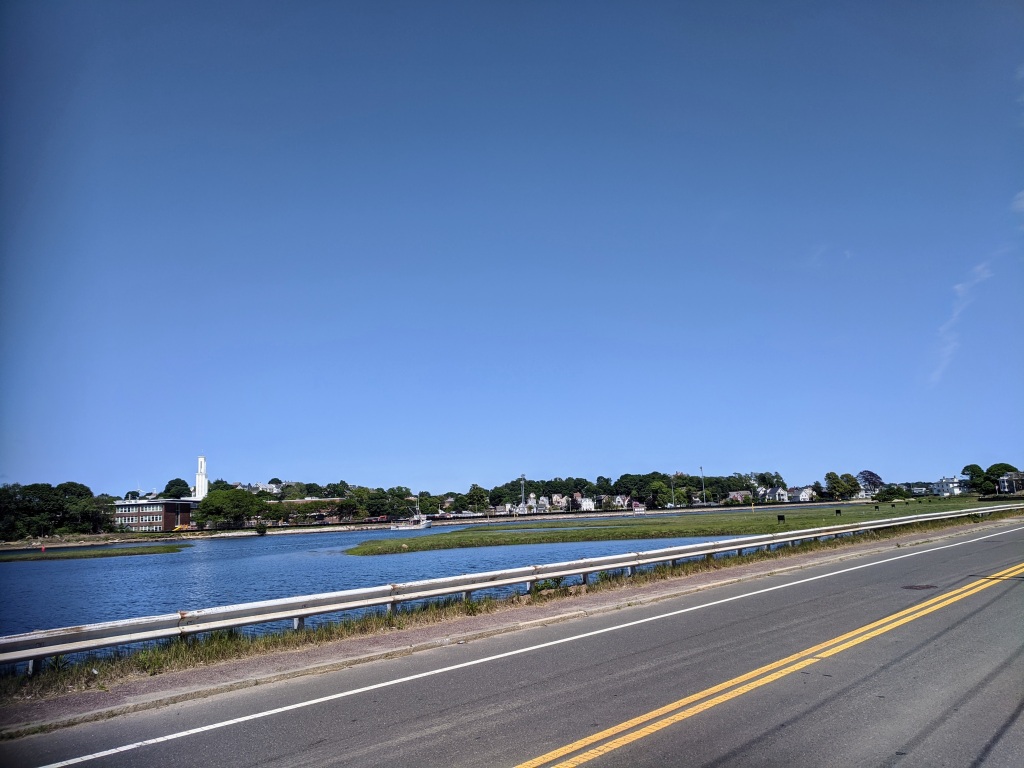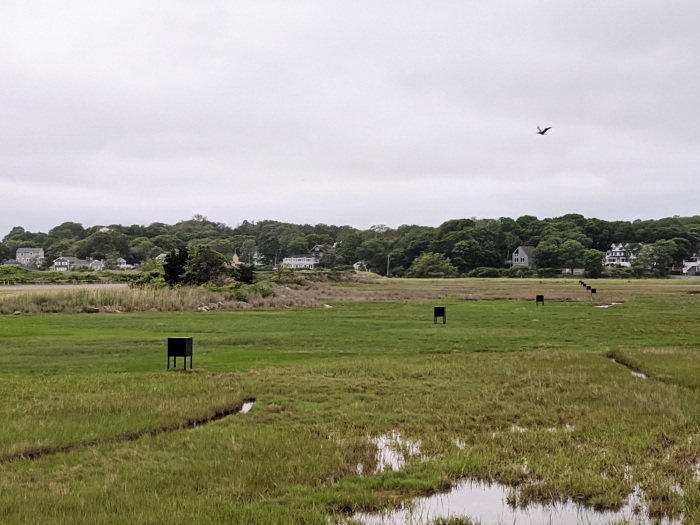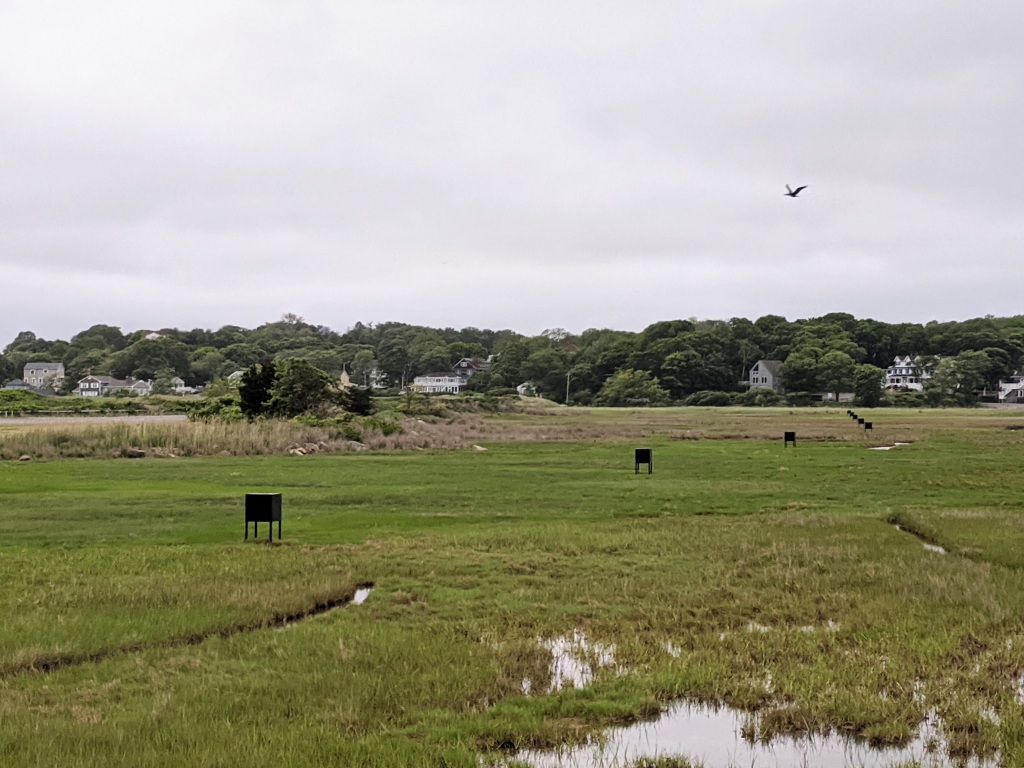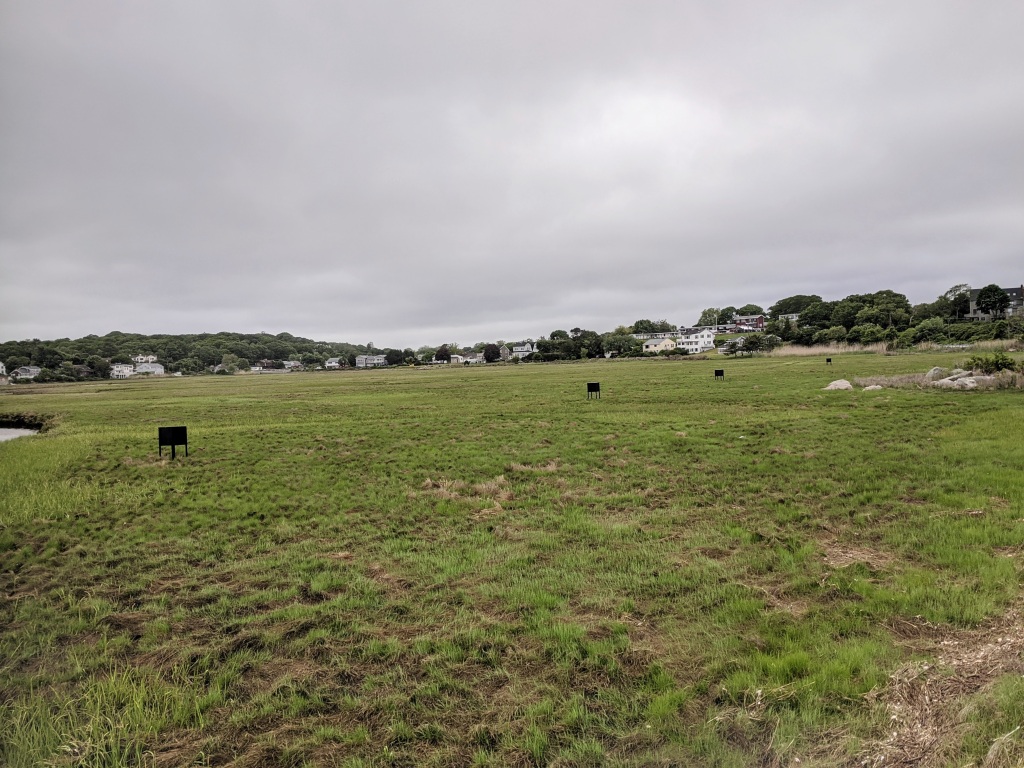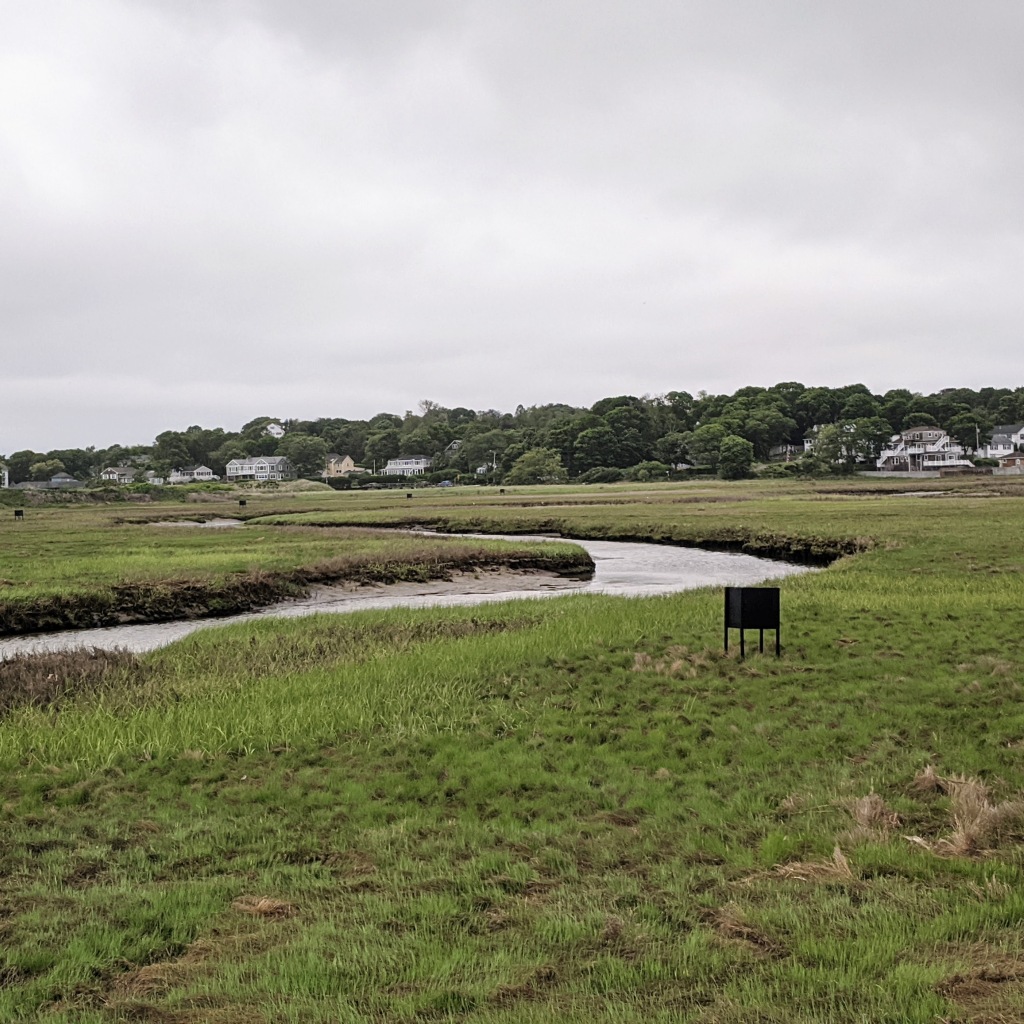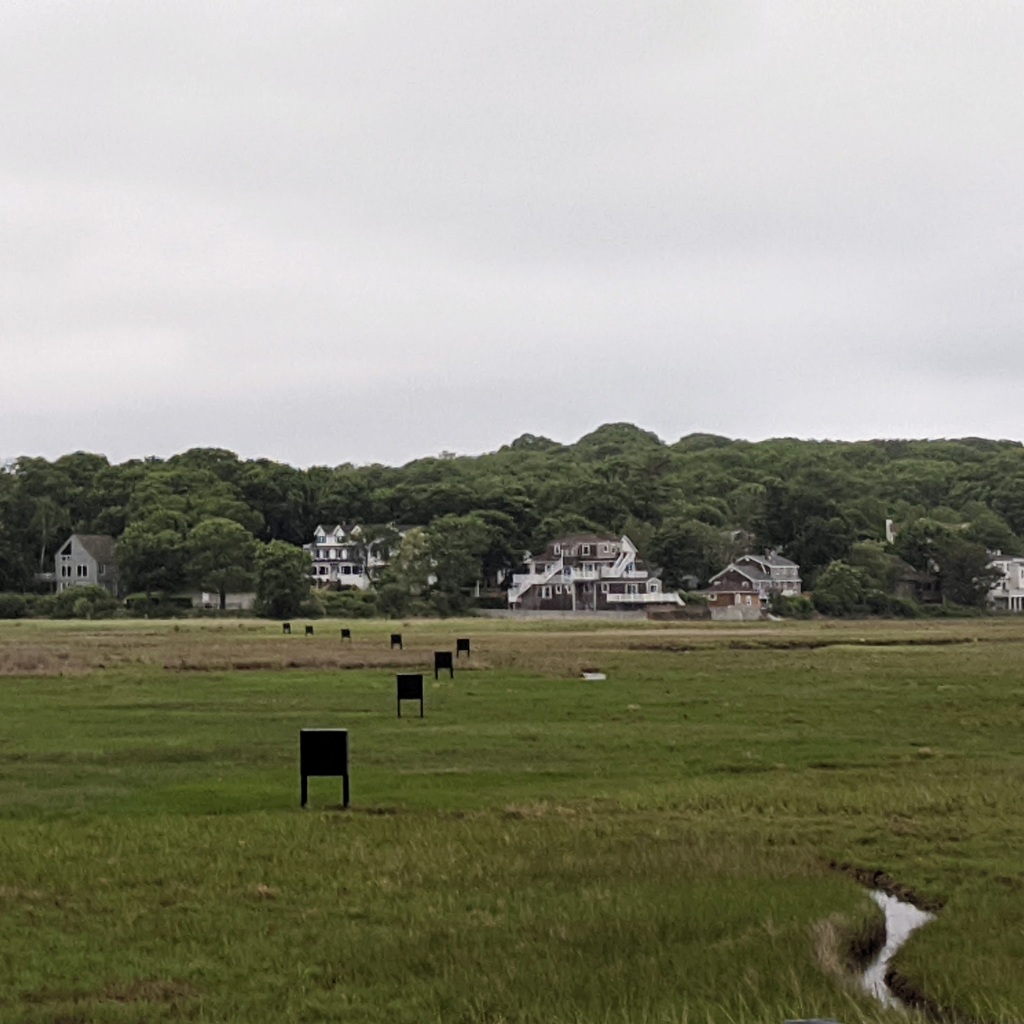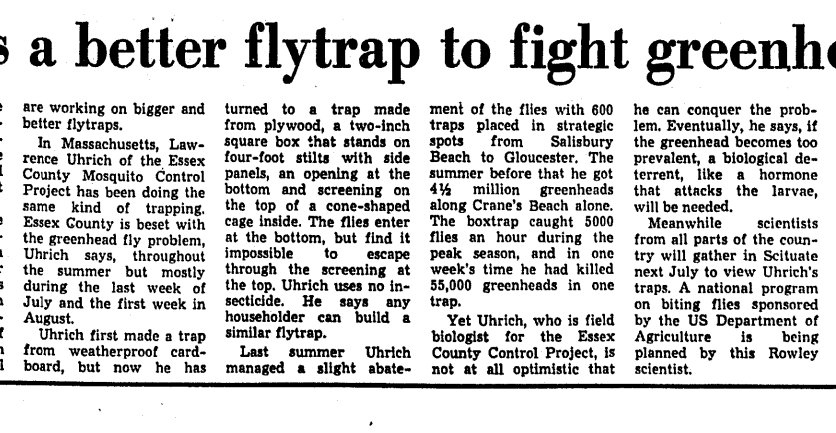PHOTOS: GHS Flood Control Project 2023
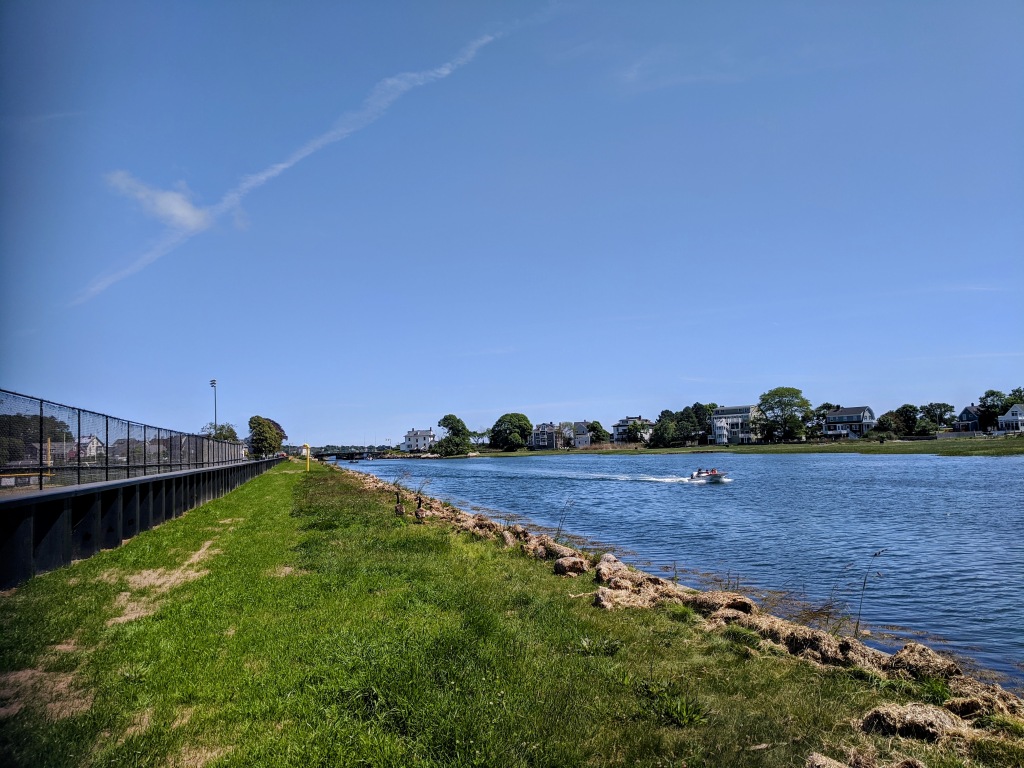

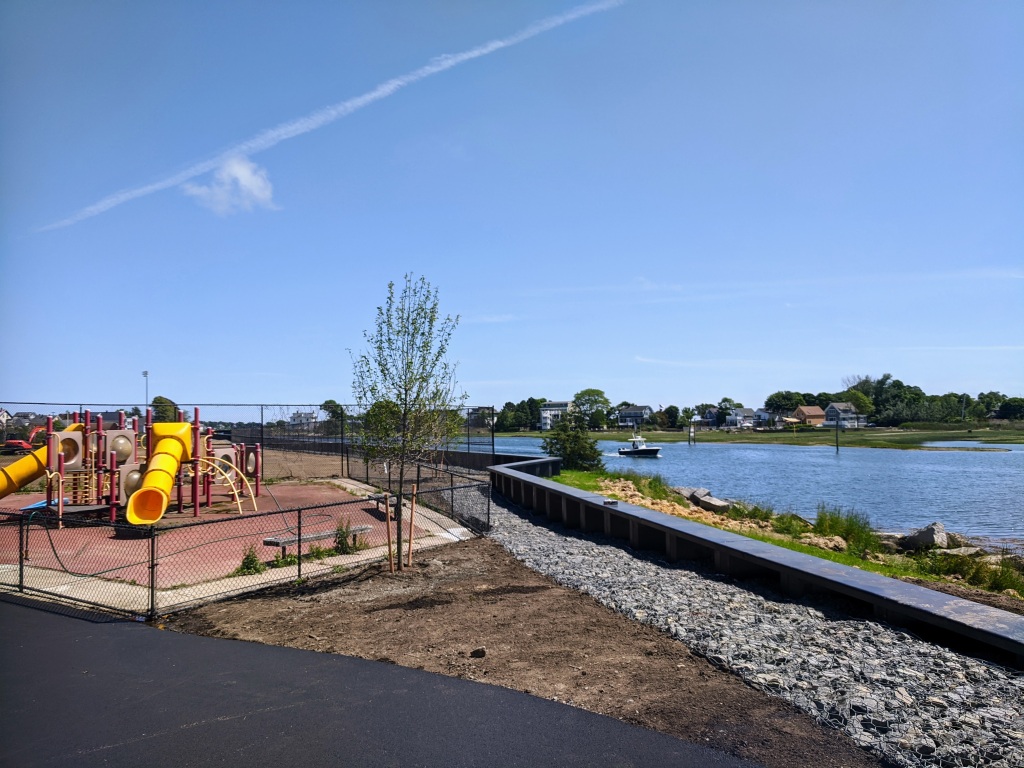

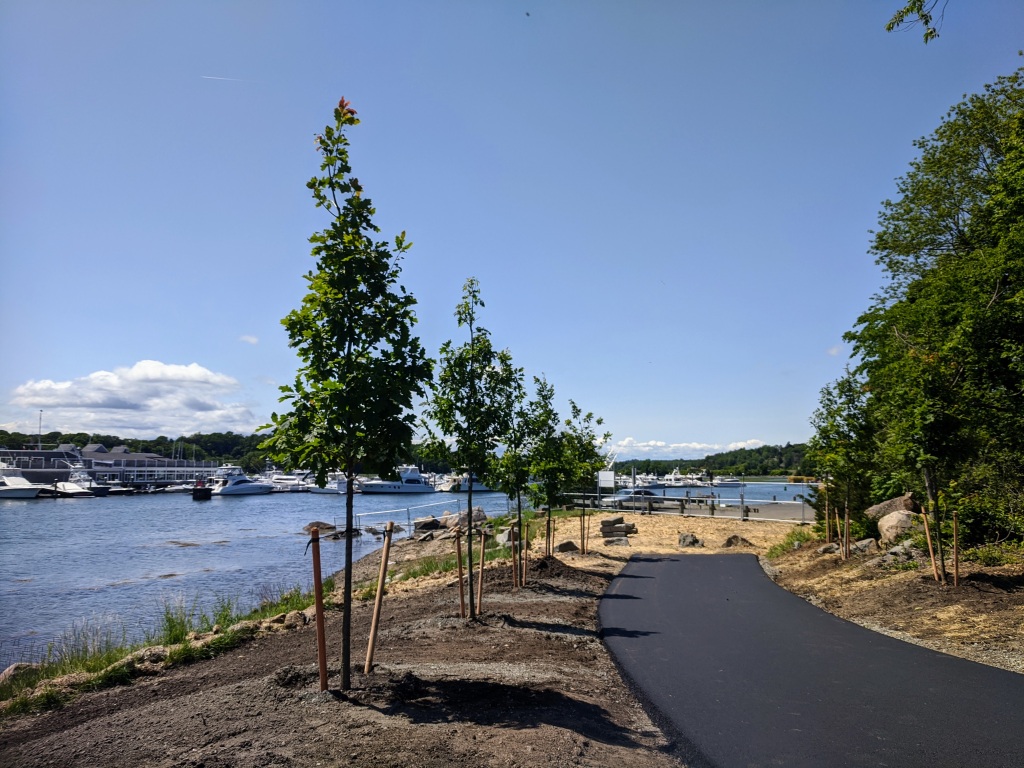
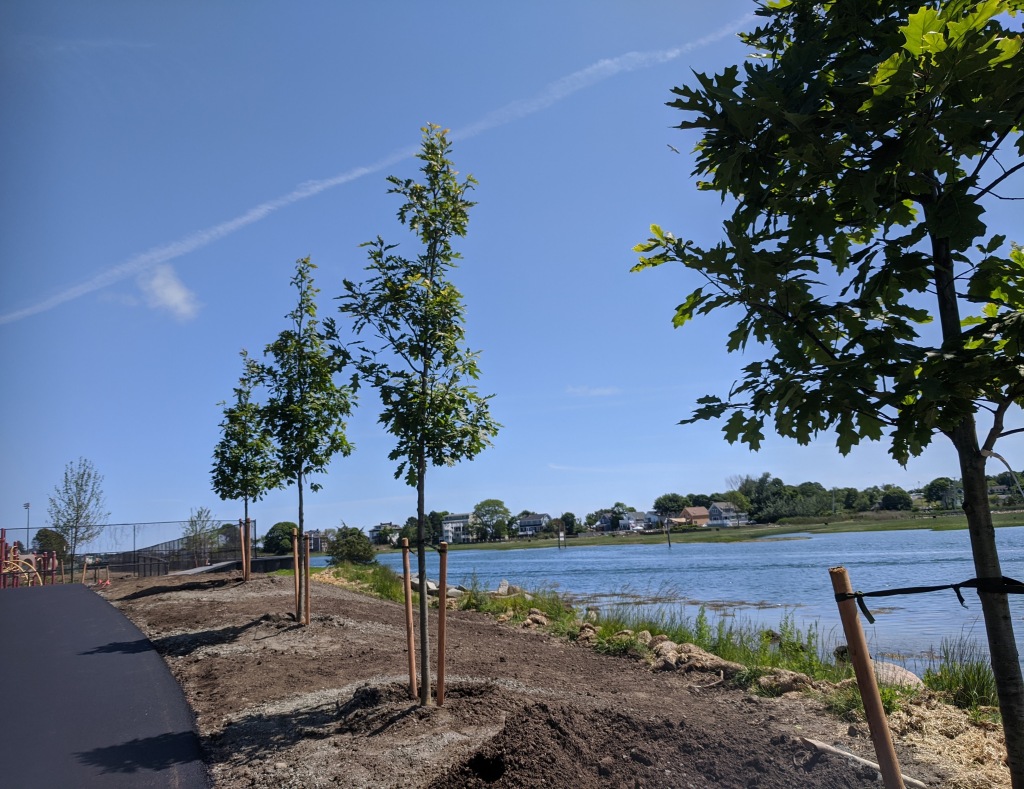
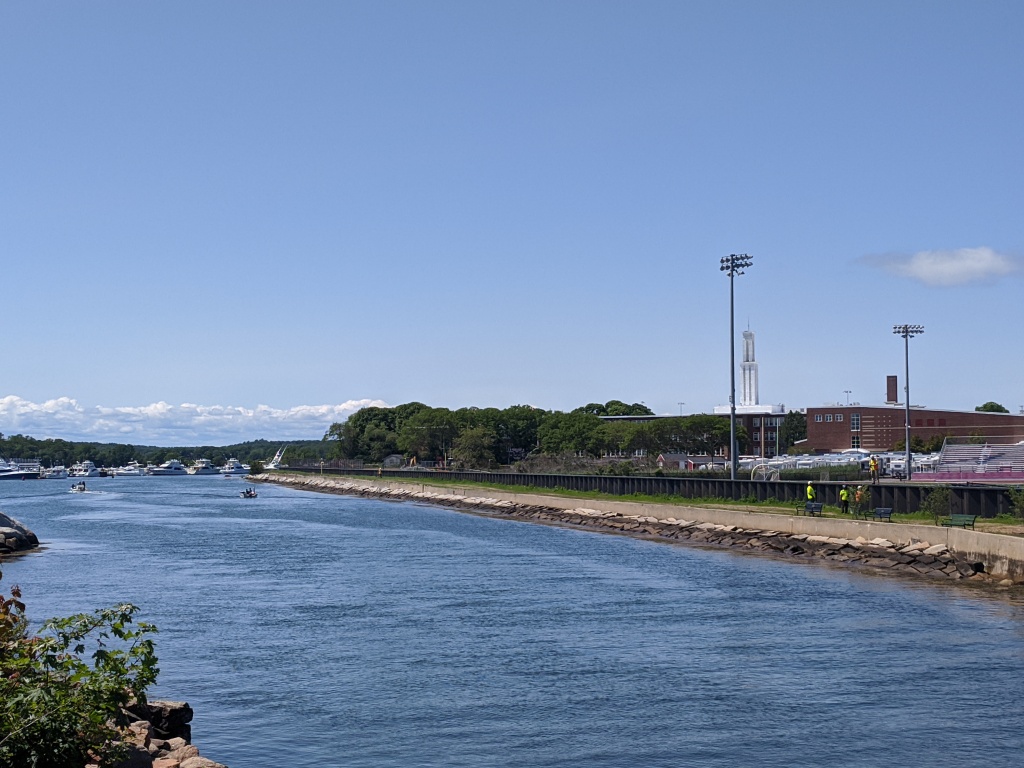
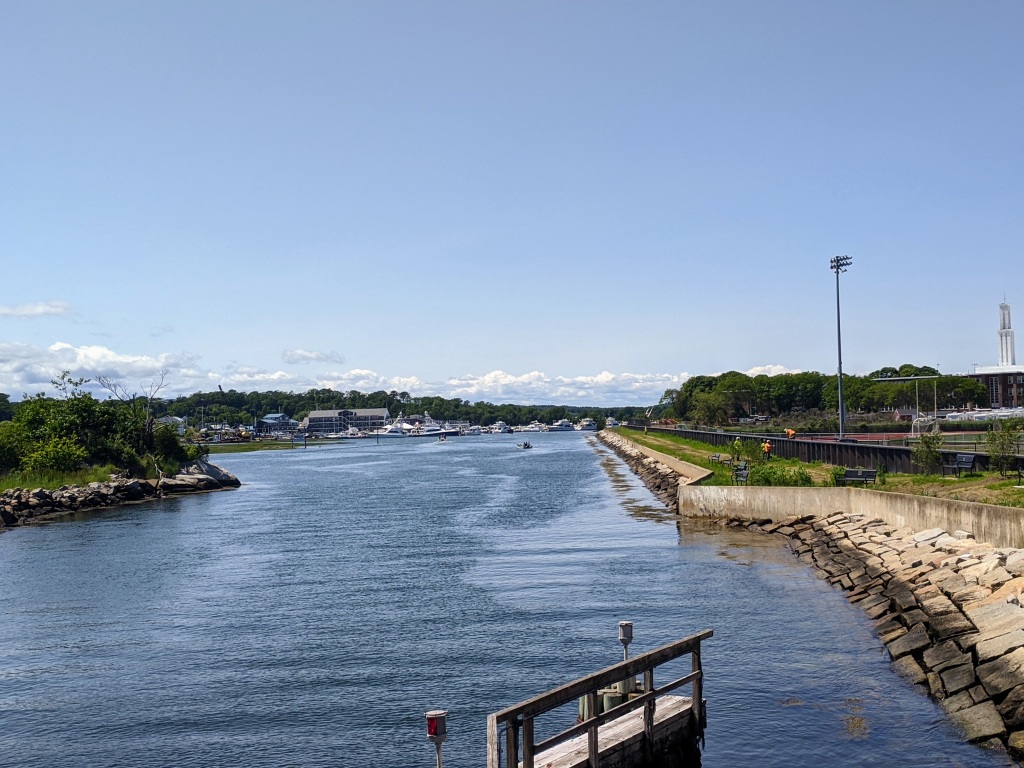
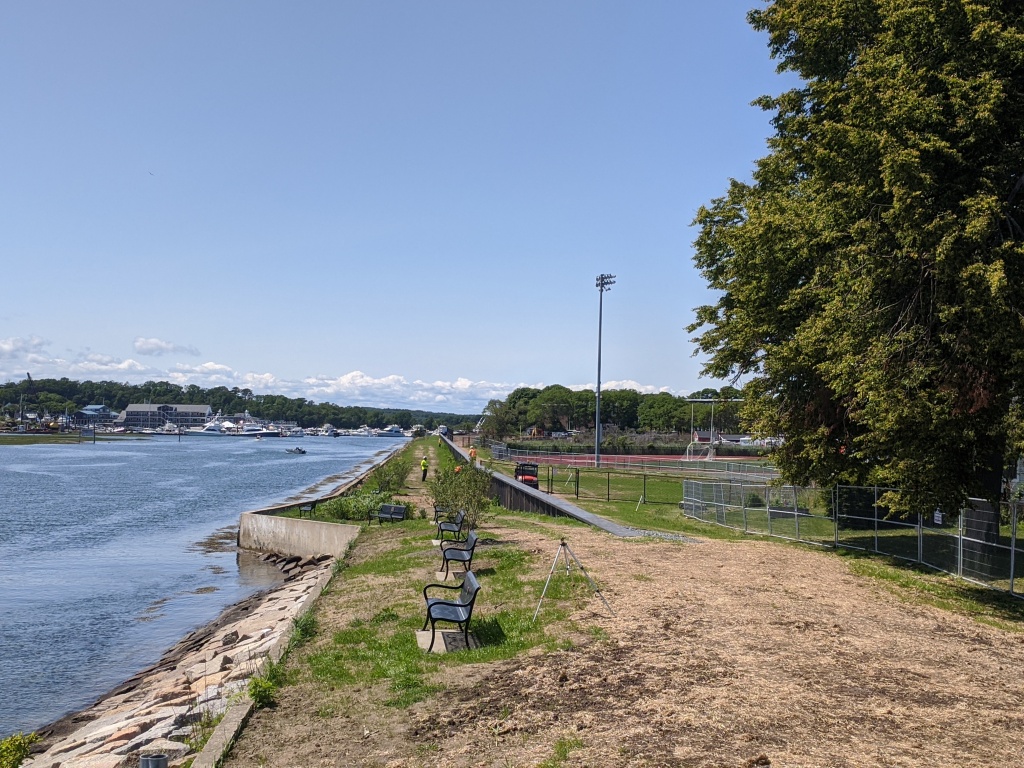

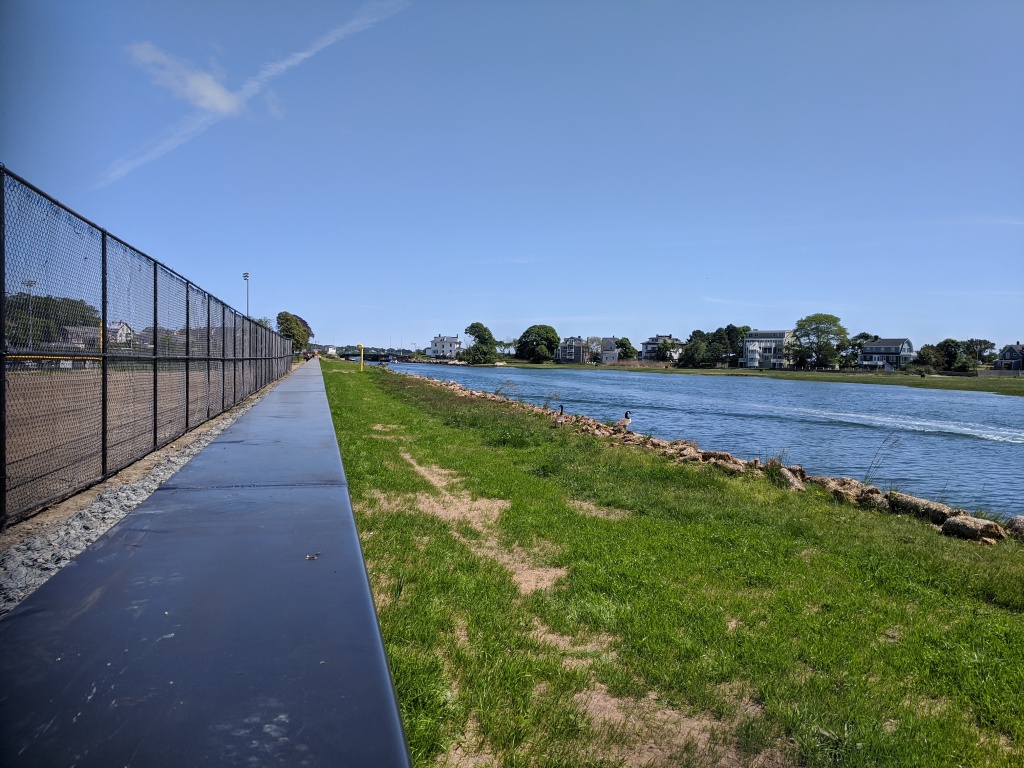

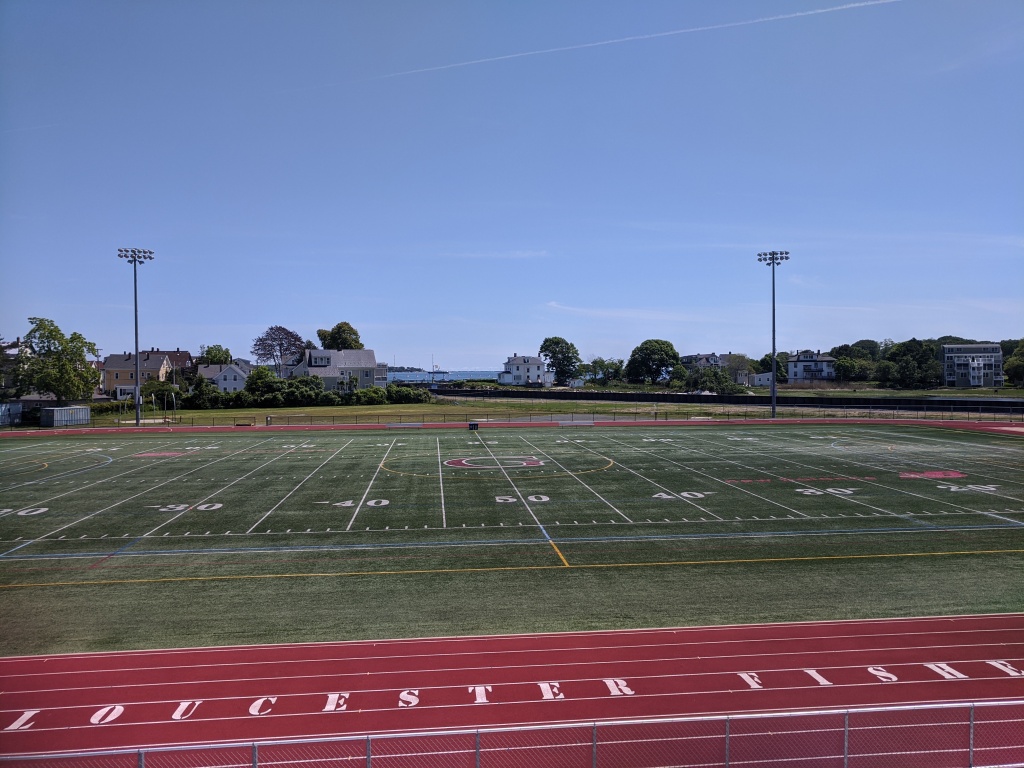

If you stop to think about how many projects Gloucester’s DPW is pulled into that they may not have spearheaded but must deliver and complete, all the while doing their essentials, it’s no wonder other Public Works look at what Gloucester’s DPW provide and think they do a model job.
For permanent infrastructural projects (see Stacy Boulevard series) it’s evident that form and beauty are taken into consideration as much as possible.
There’s a lot more green in the GHS Flood Control Project 2023 since the last photographs I posted a month ago. More plantings and landscaping coming will add even more appeal. New trees were laid this week.
“Construction went smoothly. With permanent infrastructure it’s tricky to balance form over function. Form is so, so important! To me. To the City. To the residents. I always try to strike a balance.”
Mike Hale, Dir. DPW, Gloucester, MA
Diagonals and lines are incorporated into the landscape elements and the zig zag, tapered wall itself which is wide enough–by design for its purpose–and that someone climbing, sitting, or walking on top is not hurt. Final rounds of hydro seeding should be finished by Friday. Crews are working on “small stuff and finishing touches”. Removal of equipment like the mini excavator are scheduled for Monday.
At this stage in the project, the grassy walk is wide and welcoming and the Annsiquam humming with activity. Two geese sauntered past unbothered. Maintaining public space and green additions are evident. The old preschool at the highschool’s playground equipment is enhanced and feels upgraded to a waterfront walk and park that’s as fun to visit as Cripple Cove. With 1000 less enrolled at GPS there’s ample room at GHS for relocating the preschool and school administration from Blackburn back into the highschool. There might even be room for the Pond Road or other city offices. They can make use of an enhanced amenity. When this community space opens there’s a full circle longer walk option around the school: from Dun Fudgin/Emerson, back of school, bit of Centennial to the riverwalk.
The public can resume access to the riverwalk along the ‘squam between the Cut and Dun fudgin’ next week. There are three ways to walk on: 1)to the right of the bridge tender from Stacy Boulevard, 2)from the high school (by the softball field), and 3)Dun Fudgin’. The bridge tender is city property; they lease it from the city. If you check out the progress before Tuesday, you can see the temporary fences and locked gates which will be removed.

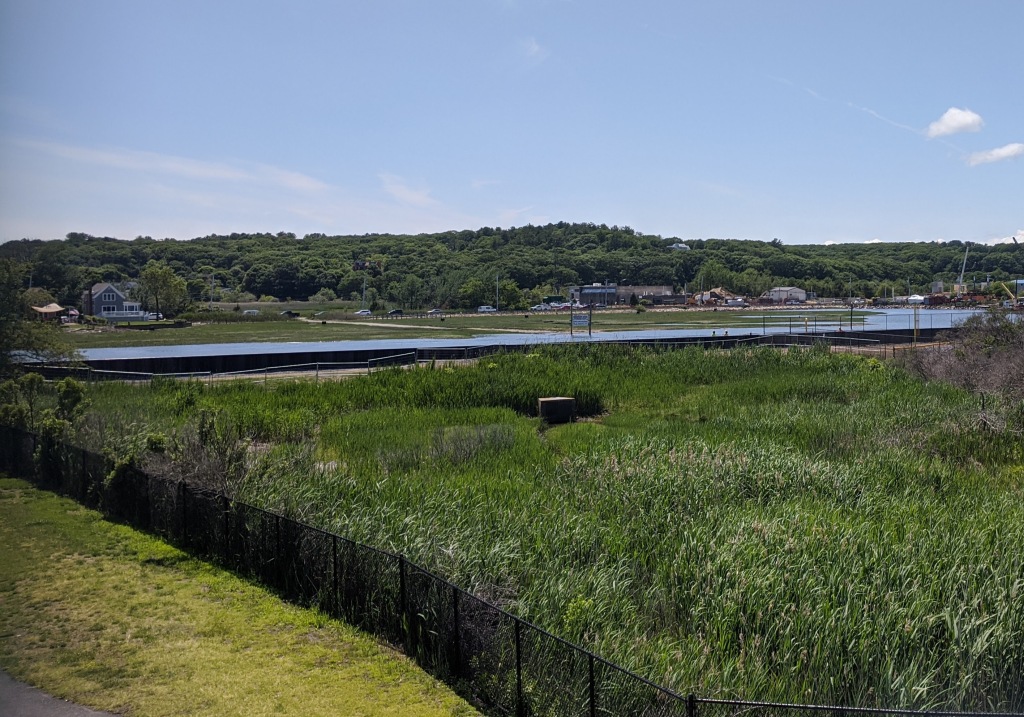
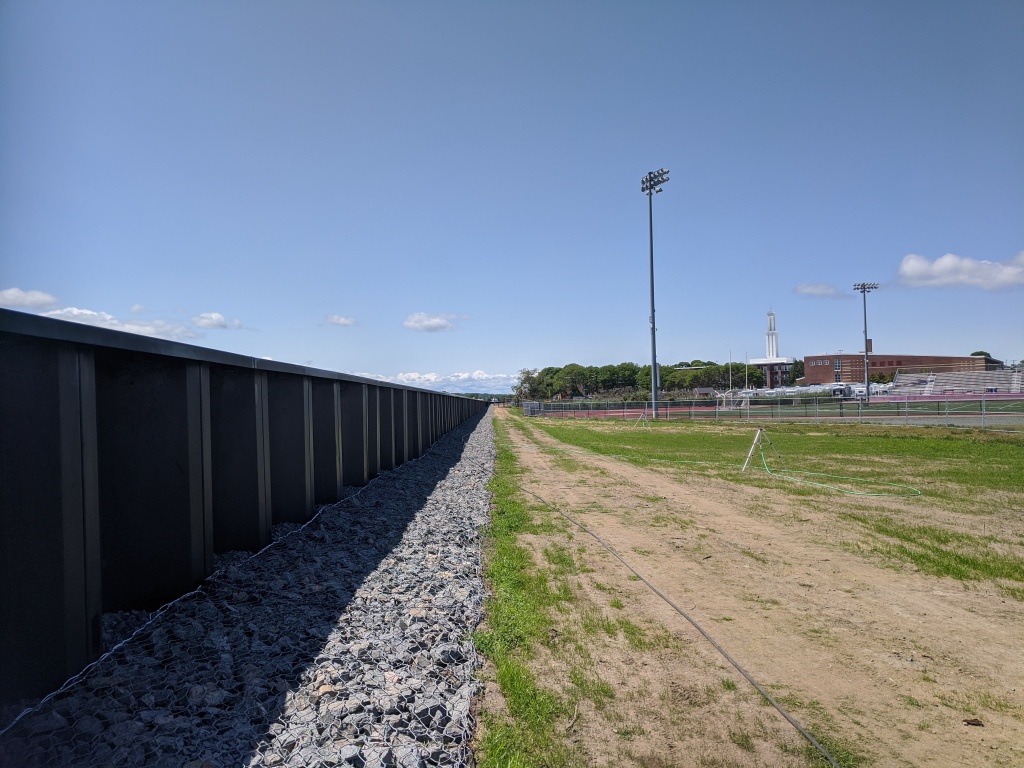
Aerial View from Edward Hopper

FAST STATS for the GHS Flood Control 2023
**Managed and partially funded by City of Gloucester, DPW**
Managed: City of Gloucester DPW
Engineers: GZA GEO Environmental, Amesbury
Contractor: Charter Contracting Boston
Status: nearly across the finish line.
Progress: as of June 21, 2023 completion ETA is Monday June 26, 2023. Gates open Tues.
Project start (historic): pre 1900
Modern project start: on the ground January 2023
Funding Awarded by:
- from State: TBD Executive Office of Energy and Environmental Affairs; FEMA; Mass Emergency Management Agency
- from City: TBD partially funded plus in kind by DPW
- Funding in place as of: TBD
- Gloucester grants over the years in this vicinity include: emergency work on Blynman collapse; earlier GHS storm water project; Newell Stadium New Balance Field special surface;
Bid Open and contract amount: 3.244M
Contract completion: 2023
Locations: Along ‘Squam length between cut bridge and dun fudgin
Priority: 1,439 linear feet of flood wall necessity, for safety and continued investment along an area the city has developed since the landfill late 1800s, and longer related to the Cut. Infrastructure project with quality of life benefits for residents and visitors. Rather than traditional loud pneumatic pile driving, special drive sheets were fabricated to offset the noise (essentially vibratory)
Temporary work site chain link fence: Required. The chain link fence is installed by the contractor to protect the work zone and define it better. Will be removed as soon as possible.
HIGH RES PLANS
High Res plans here
Wastewater Treatment Facility
Directly across the river, construction for another wall encircling the city’s wastewater treatment facility is nearly finished. That project includes deployable gates for overflow.
The city’s investments in infrastructure is not new nor its evergreen commitment to improvements.
Fiscal year 2023 the City’s proposed budget is 133.9M. The DPW budget is about 32.1M million. For comparison, the school budget is about 50M*, 60% more. If we want more services or faster, money is another piece of the form vs. function balancing act.
*50M base number excludes: facilities rental for preschool/admin at Blackburn, etc.; school choice out tuition costs; Essex Tech expenditure; new school project; and special budget supplemental request/loan orders (e.g. school portion of 2.15M IT)
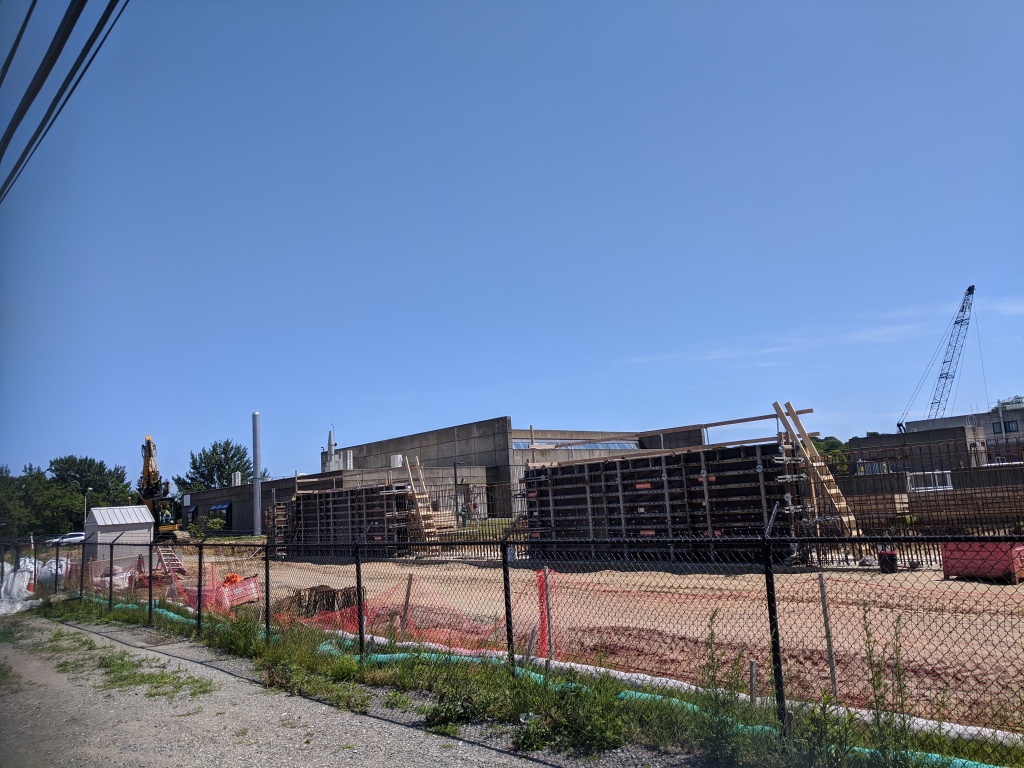
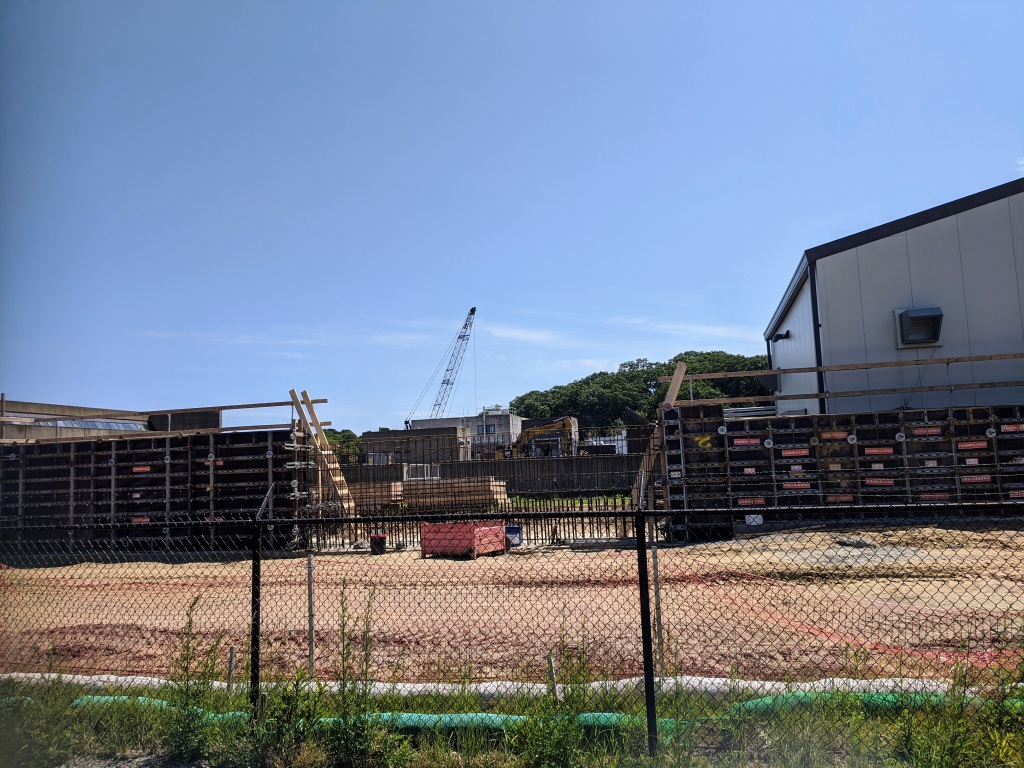

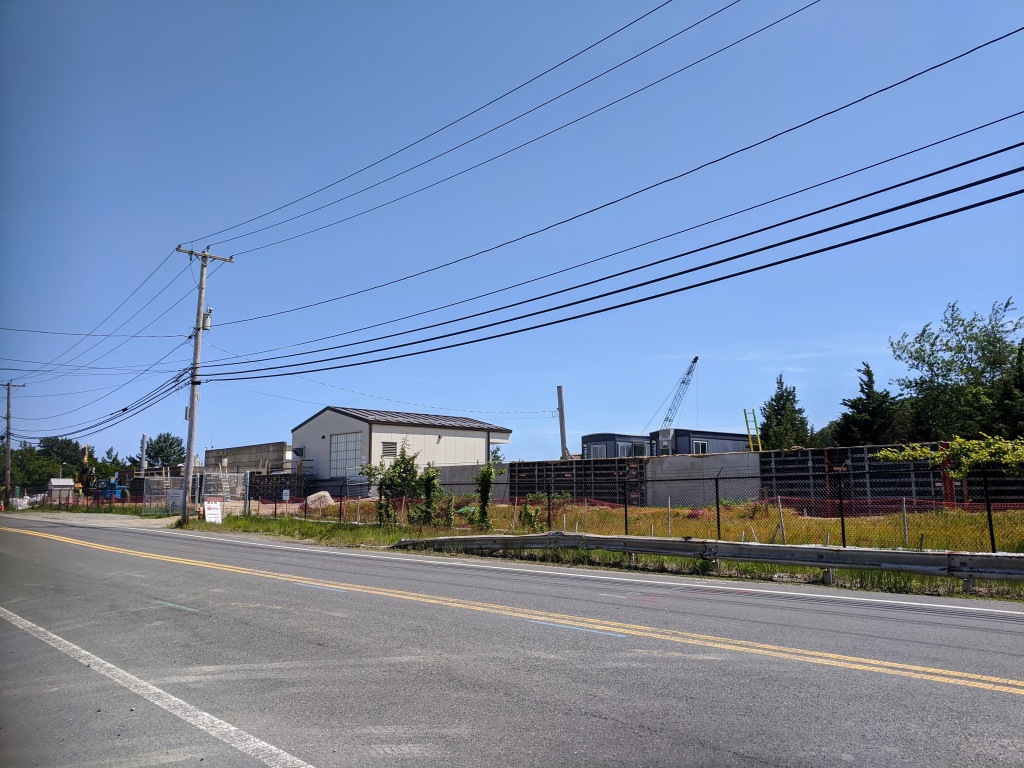
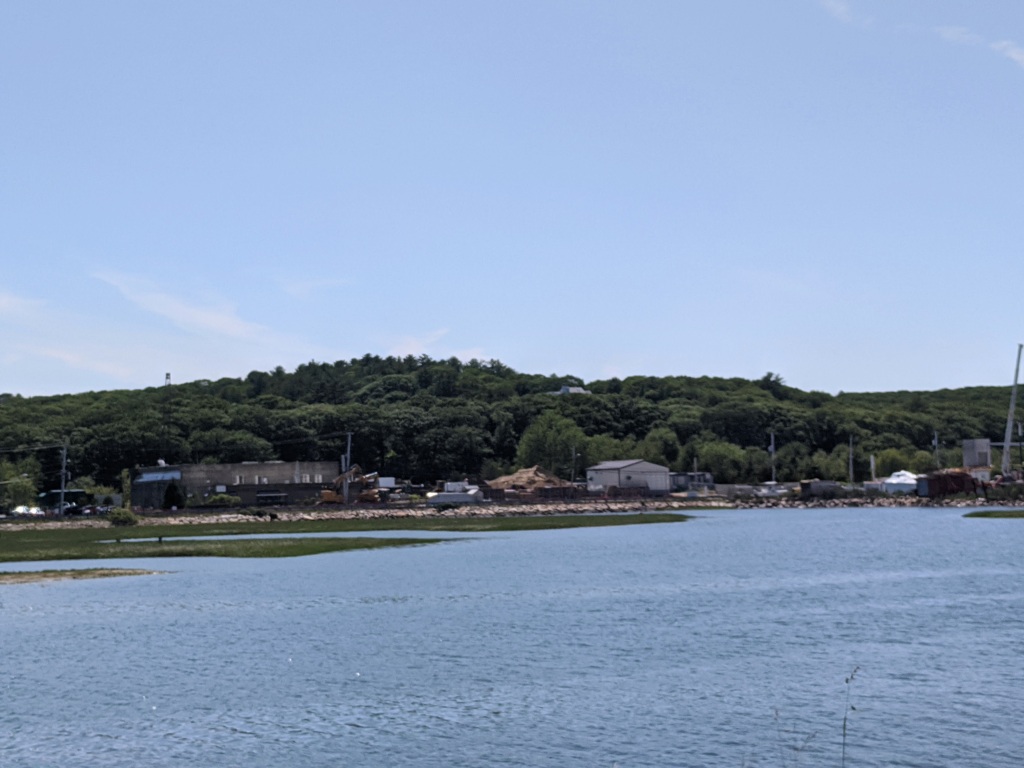
MORE Greenhead trap boxes
DPW did not install the greenhead boxes in Gloucester. In the photos above you can see greenhead boxes added to the salt marsh here as well as the new ones behind Good Harbor Beach. The Commonwealth’s Northeast MA Mosquito Control installed 58 traps. Last year it was 20. There’s a history of mosquito AND greenhead control combined action plans by the state which I wrote about here when I saw the new Good Harbor ones. I will add to that list an article by Ethan Forman who wrote about Essex and Wingaersheek and the city considering reenrolling. See Gloucester Daily Times here. That article mentions board of health asking city council for greenlight for the greenheads (each box about $90 a piece and a 3 year contract).
I will try to find a map or list of site locations. In the recent past I remember them in the marsh behind Lobsta Land. Apparently there were a fleet of them in the 1980s. Do you remember seeing them in more places at that time or were you involved back then? I’d love to learn about any tallies and sites and compare with 2023.
